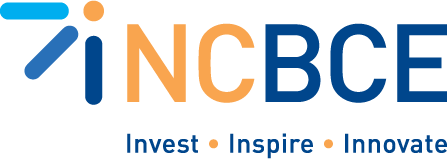Essential Questions
- What’s the right computer configuration?
Big Ideas
Different users need different computer configurations. You may be asked to support computer configurations for uses that you are unfamiliar with, so you should become familiar with common user profiles and their requirements, at least as they relate to users in your district or who will access the Help Desk.
Connection to Student Lives
As you reflect on your day, consider the different types of computers you see others using. They may be computing devices at the checkout lane or a barcode reading system at a store. You might go to different types of classes throughout the day that require different computer systems, like some for research or others for computer-aided design. Your parents or friends may also use different types of devices for different outcomes. You should be able to configure a custom PC that will meet the needs of different users that may access the Help Desk. This week you get to build that custom PC.
Framing Problem
Given a user profile, what is the best way to customize a PC for that user’s needs?
Cornerstone Assessment
Students install and configure a custom PC. Depending on the number of students and availability of parts, students may work independently or in teams on this project. At the end of the week, they should share their custom PC with the class, describe the steps they took to install and configure internal components and external peripherals, and justify their decisions.
DPI Standards
- NCCTE.2020.II21.03.08 - Select and configure appropriate components for a custom PC configuration to meet customer specifications or needs.
- NCCTE.2020.II21.03.09 - Install and configure common devices.
A+ Standards
TOPIC 5E: Configure a Custom PC
Knowledge
- The difference between thick (standard) clients and thin clients
- Virtual Desktop Infrastructure
- Different types of business workstations and how those impact system requirements
- Different types of workstations for home use and how those impact system requirements
- Guidelines for selecting components for a custom PC
Skills
- Install and configure all internal components and external peripherals to meet the needs of a user profile
Vocabulary
Client Personal Computers
- Standard (thick) clients
- Thin Clients
- Virtual Desktop Infrastructure (VDI)
- Virtual Machine (VM)
- Workstation
- Integrated Development Environments (IDEs)
- Desktop Publishing (DTP)
- Computer-Aided Design (CAD)
- Computer-Aided Manufacturing (CAM)
- Audio/Video editing workstations
- Computers for home use
- Media centers
- Home theater PC (HTPC)
- Personal video recorders (PVR)
- Home server PC
- Network Attached Storage (NAS)
- Gaming rigs
- Thrashed
- Media centers
Weekly Map
Monday
Introduction to problem: Complete custom PC workstation
Activity 5-9: Discussing Custom PC Configuration
Activity 5-10: Selecting Components for Custom Workstations
Team meetings to develop project plan and goals
Tuesday
Review module content, as necessary
Contribute to team project
Wednesday
Hands-on exploration
Team progress check with supervisor (using project plan)
Thursday
Review module content, as necessary
Contribute to team project
Friday
Team sharing of project with whole group
Online post-assessment
Lesson Ideas
This is the culminating activity of the module. Students should explore the needs of different types of user profiles, such as those commonly identified by the district’s IT department (e.g., student, teacher, administrator or support staff with specific job duty needs, graphics or video creation, and perhaps even an eSports gamer). If they have been working on their custom PC throughout the module, they can use this time to complete their custom workstation. Or students may be asked to completely customize a PC this week only. At the end of the week, students should describe the system they have configured and justify the decisions they made about topics covered in the module, like memory, expansion cards, storage, power supplies, displays, keyboards, and other peripherals.
Potential Resources
The Official CompTIA A+ Core 1 & Core 2 Instructor Guide for Exams 220-1001 and 220-1002
- Topic 5E: Configure a custom PC and all peripherals (p. 315-325)
- Activity 5-9: Discussing Custom PC Configuration (p. 322)
- Activity 5-10: Selecting Components for Custom Workstations (pp. 322-323)
CompTIA also offers videos for purchase through their website or on ITPro.TV.
Professor Messer at ProfessorMesser.com and YouTube offers numerous free videos of various lengths for many of the topics for the CompTIA 220-1001 A+ Exam. They are easy to understand, narrated videos with visuals. If you are teaching a CompTIA course, the site notes “You’re welcome to use them as much as you’d like, provided you embed the videos with the associated YouTube link or link directly to my site. Please click the “Contact Us” link at the top of our web page and let me know how you’re using them.”
- Professor Messer’s 220-1001 Core 1 CompTIA A+ Training Course videos on ProfessorMesser.com. Search or scroll to find the topics you’re interested in.
- Professor Messer’s CompTIA 220-1001 A+ Training Course playlist on YouTube
Entry Level I.T. Training from Technology Gee
- Custom PC Configurations (Article | Video – 4:38)
- Configuring Common Devices (Article | Video – 7:01)
Videos from Basics Explained
Articles and other resources
Hardware Components from Lumen Learning. Long overview that covers concepts across multiple topics in the A+ Exam Objectives
Everything You Need to Know About Computer Hardware (April 24, 2021) long article by Tim Fisher for LifeWire that contains links to further description of many components that you might return to throughout the course for different topics.
A beginner’s guide to building your own PC by David Nield for Popular Science (October 18, 2018).
How to build a computer from Micron, a memory manufacturer.
How to build a custom PC for gaming, editing, or coding by Stefan Etienne for The Verge (September 13, 2018)
